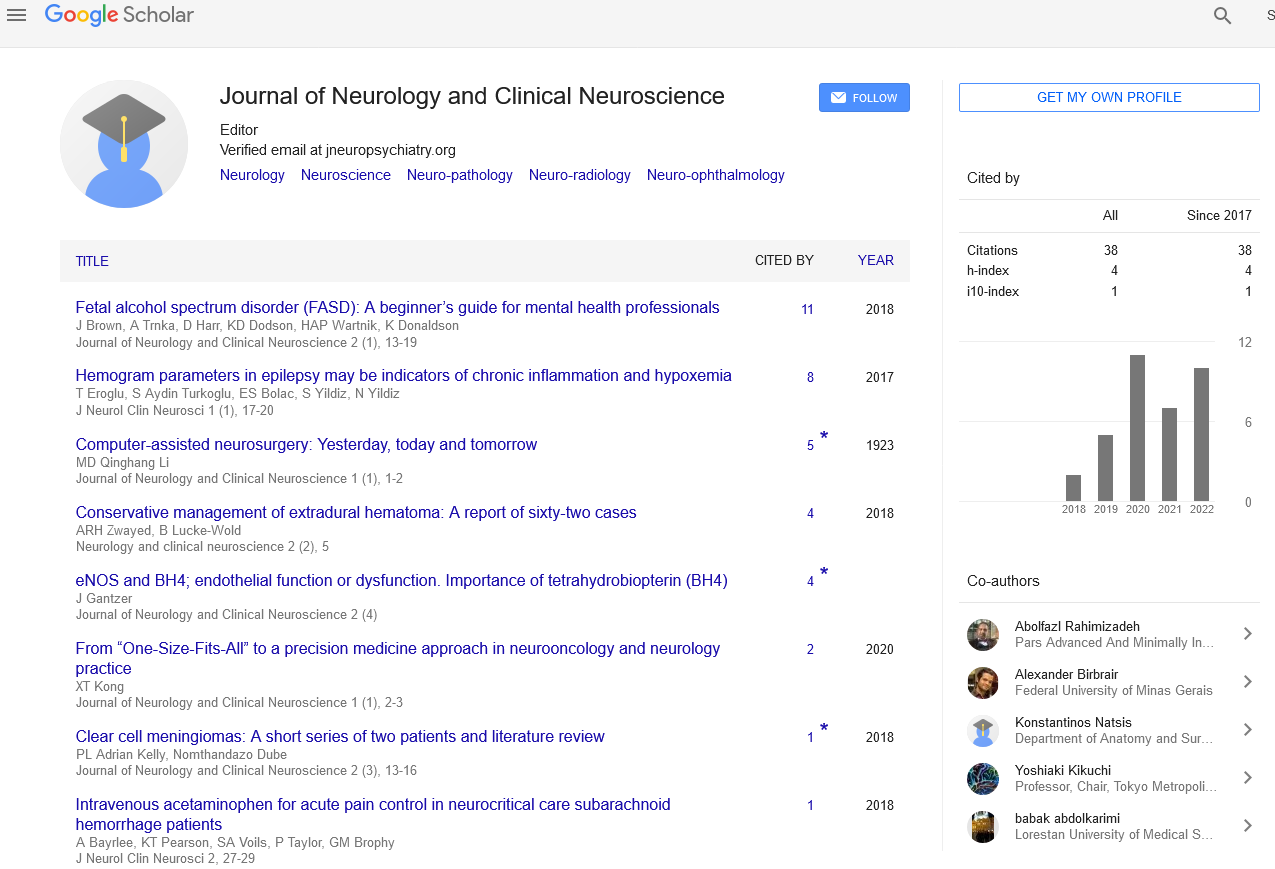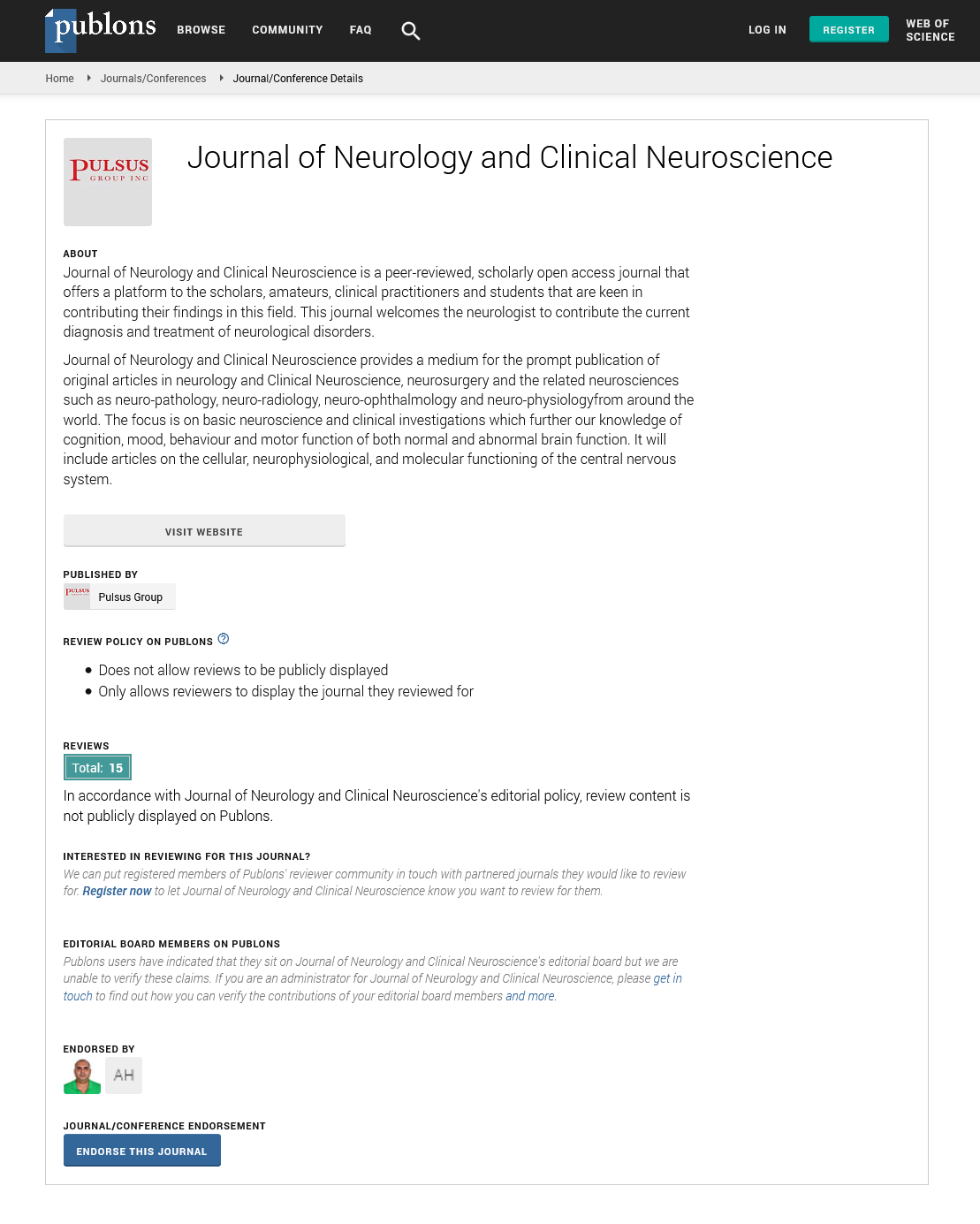Chronic subdural hematoma
Received: 31-Aug-2017 Accepted Date: Aug 31, 2017; Published: 10-Sep-2017
Citation: Mostofi K. Chronic subdural hematoma. Neurosurg J. 2017;1(1)3.
This open-access article is distributed under the terms of the Creative Commons Attribution Non-Commercial License (CC BY-NC) (http://creativecommons.org/licenses/by-nc/4.0/), which permits reuse, distribution and reproduction of the article, provided that the original work is properly cited and the reuse is restricted to noncommercial purposes. For commercial reuse, contact reprints@pulsus.com
Chronic subdural hematoma is a frequently encountered entity in neurosurgery in particular in elderly patients.
It commonly arises after 60 years. Several other factors that contribute. In most cases, no etiology is found [1-3]. Contributing factors like chronic alcoholism and anticoagulant treatment are determined. The initial bleeding may be spontaneous or cause by minimal trauma. At first, hemorrhage often goes unnoticed. It progressively takes volume and compresses brain. Signs and symptoms can vary widely among individuals. CSDH is rightly called the great imitator [4]. It is able to imitate every conceivable symptom from simple headache to coma .the symptoms are generally very insidious and develops gradually. Headache is a very frequent symptom in CSDH. Deterioration of patient’s physical condition Gait disturbance, Weakness + hemiparesis, Memory disturbances, Dizziness, Psychic disturbance, Consciousness disturbance may occur [5]. Less frequently epilepsies, hemiplegia can arise.
There in a high variance in surgical treatment of CSDH in medical literature. Conservative treatment consists of hydration in this population who are usually dehydrated because of their advanced age and alcohol consumption. Recently, a treatment using Dexamethasone is proposed with good results [6]. We used this treatment in our department in very old patients and in patients with generally poor state. I find that the outcome of such procedures is mixed. For example, this treatment is not appropriate for patients who have multiple layers of subdural hematoma with different dates [7]. It should not be used for patients with neurological deficits and signs. In these patients a surgery shall be provided to evacuate hematoma.
At any rate, the surgery is the gold standard of CSDH treatment. Varied and wide surgical techniques have been reported in medical literature: craniotomy and direct evacuation of hematoma. Trephine hole. One or two trepanation holes. Implantation of drain or not [8,9].
In these patients older than average population, I proposed a minimally invasive surgery reported in a paper in 2011 [10]. We measure the hematoma volume in advance on preoperative CT scan imaging by software funding for this purpose. The procedure is performed under local anesthesia with a mild sedation in non- cooperative patients. For other patients, no local anesthesia is performed. The patient is placed in a supine position with raised shoulder on the side of the hematoma and the head turned towards the contralateral side. The surgery takes approximately between 25 to 30 min. The skin is prepared. With a stroke of scalpel I do a 5 mm incision to cross the scalp. I use a twist-drill for producing a little transverse hole in bone. After that, I use a Trocar of 1.1 mm in diameter and 30 mm in length to pierce the dura matter. Once, I crossed the dura, I slowly evacuated small amounts of hematoma with a 20 ml syringe. I prefer evacuating in several steps in order to avoid causing an abrupt change in intracranial pressure. To avoid injury to the brain, we stopped the evacuation a few mls less than data provided by the software.
After a half-hour to one hour observation period in recovery room, the patient returned to his room and post-operative observation resumed with an evaluation of the Glasgow Coma score, neurological examination and measurement of constants of blood pressure immediately after surgery and then every hour up to 4 h and then spacing the review to once a day. Patients are allowed to get up and mobilized two hours after surgery.
The patients received a control CT scan the day following the surgery. Discharge from hospital is two or three days post-operation. I reassess patients a month after surgery with a control CT scan. I do not introduce any treatment other than analgesics. Patients are advised to drink water. More than patients are operated by this procedure.
More than 250 patients have been operated by this technique. The preliminary results have been published in 2011 [10]. The data of all patients will be analyzed and published shortly.
REFERENCES
- Kawakami Y, Chikama M, Tamiya T, et al. Coagulation and fibrinolysis in chronic subdural hematoma. Neurosurgery. 1989;25(1):25-9.
- Verjaal A. Chronic subdural hematoma in old age. Ned Tijdschr Geneeskd. 1959;103(24):1251-6.
- Hoshino N, Oshiro H, Nakagawa T, et al. Follow-up study of burr hole drainage for chronic subdural hematoma. Shujutsu. 1966;20(7):562-9.
- Potter JF, Fruin AH. Chronic subdural hematoma--the "great imitator". Geriatrics. 1977;32(6):61-6.
- Sowerbutts JG. Chronic subdural haematoma. Br Med J. 1979;1(6166):819-20.
- Delgado-López PD, Martín-Velasco V, Castilla-Díez JM, et al. Dexamethasone treatment in chronic subdural haematoma. Neurocirugia (Astur). 2009;20(4):346-59.
- Vilalta J, Tresserras P, Sahuquillo J, et al. Medical treatment of chronic subdural hematoma. Med Clin (Barc). 1984;83(12):519-20.
- Kotwica Z, Brzeziski J. Chronic subdural hematoma treated by burr holes and closed system drainage: personal experience in 131 patients. Br J Neurosurg. 1991;5(5):461-5.
- Markwalder TM, Steinsiepe KF, Rohner M, et al. The course of chronic subdural hematomas after burr-hole craniotomy and closed-system drainage. J Neurosurg. 1981;55(3):390-6.
- Mostofi K, Marnet D. Percutaneous evacuation for treatment of subdural hematoma and outcome in 28 patients. Turk Neurosurg. 2011;21(4):522-6.





